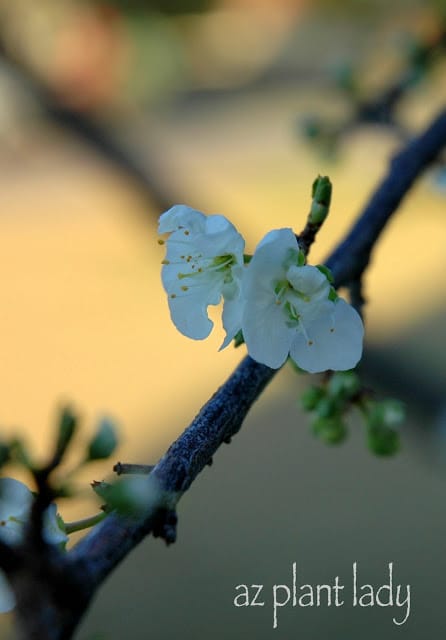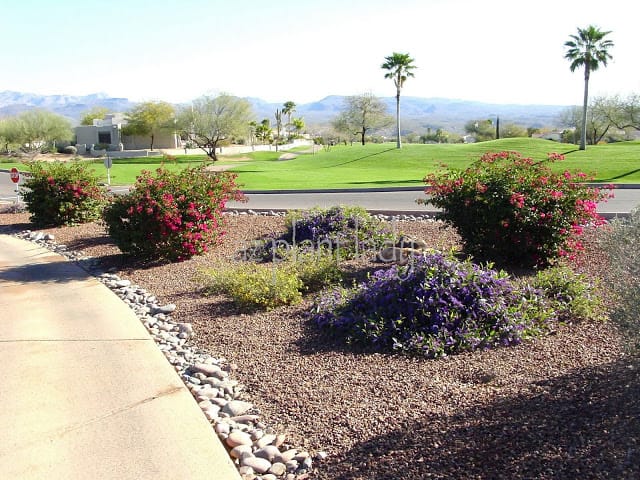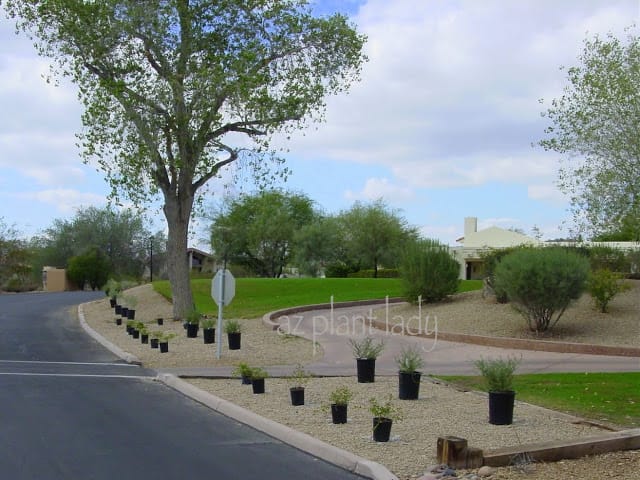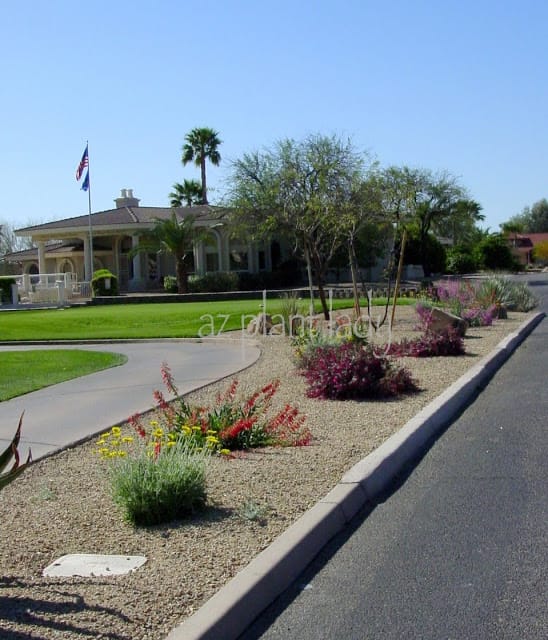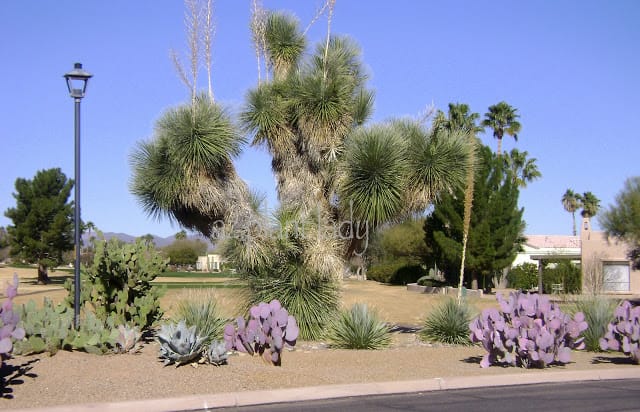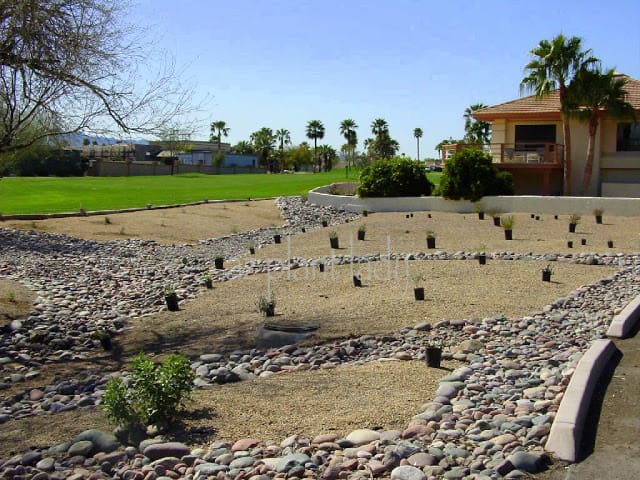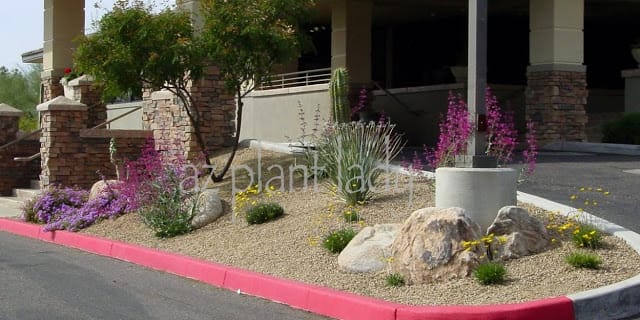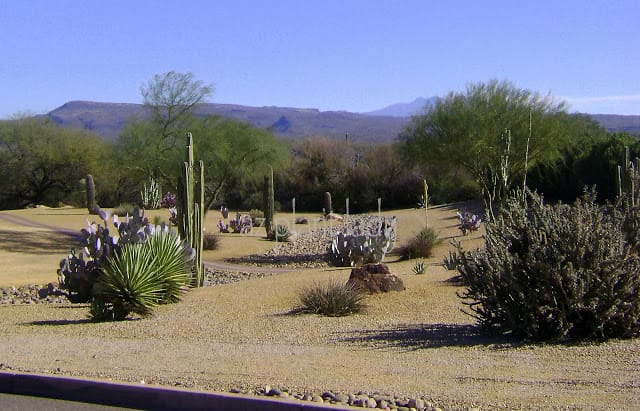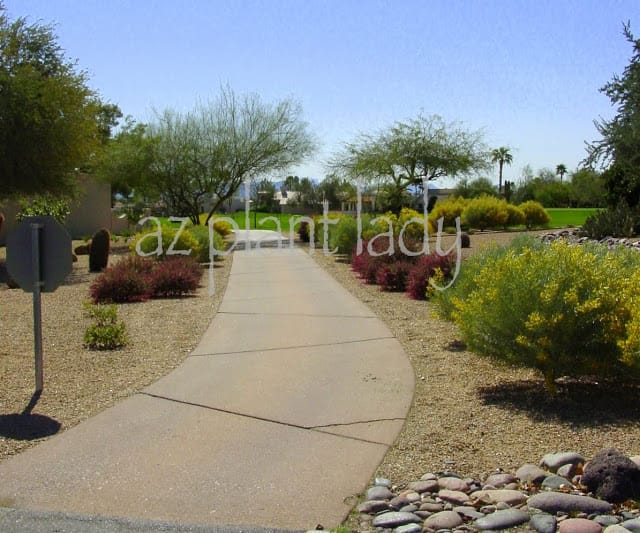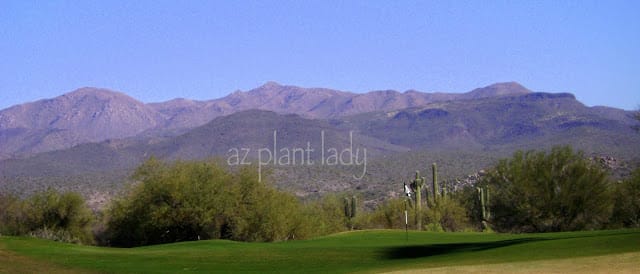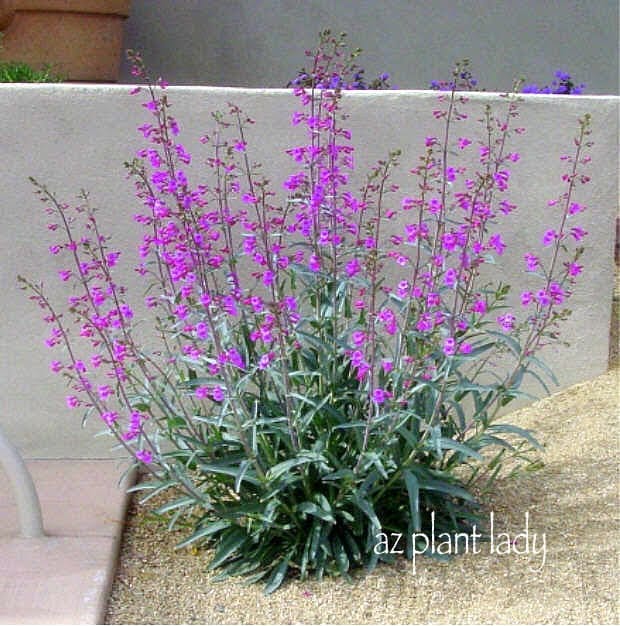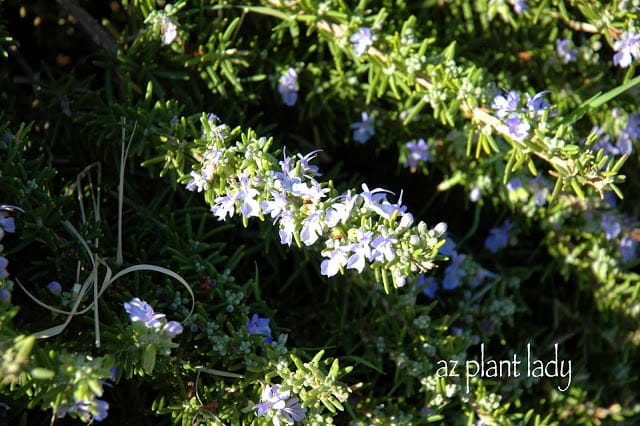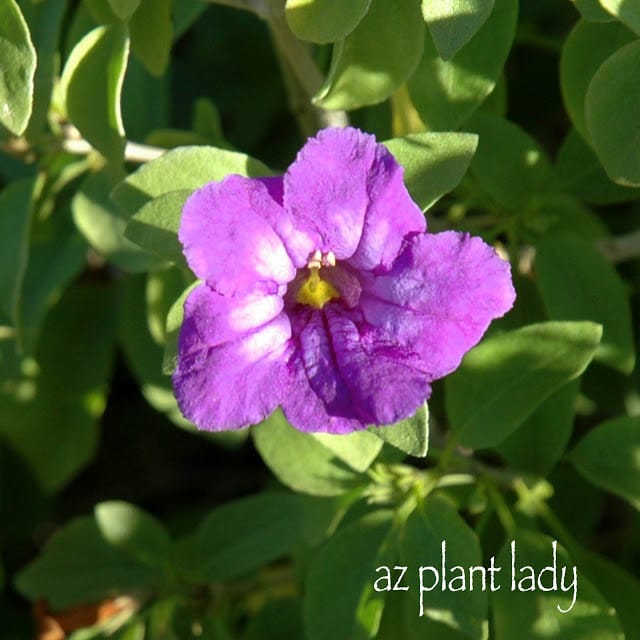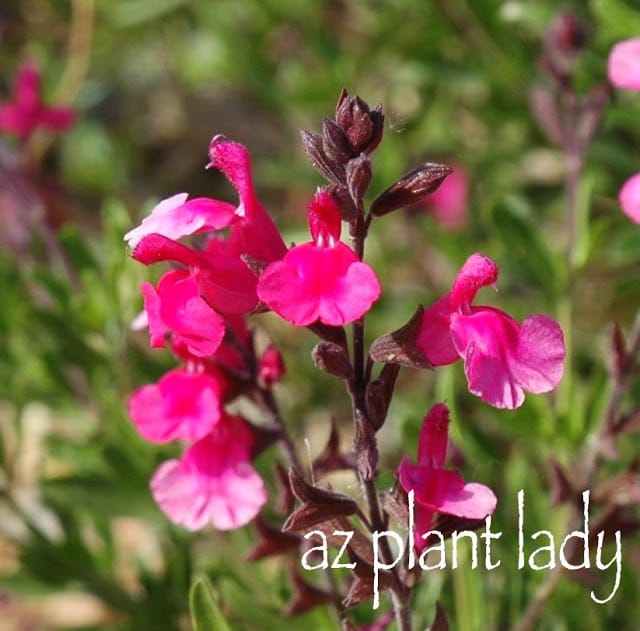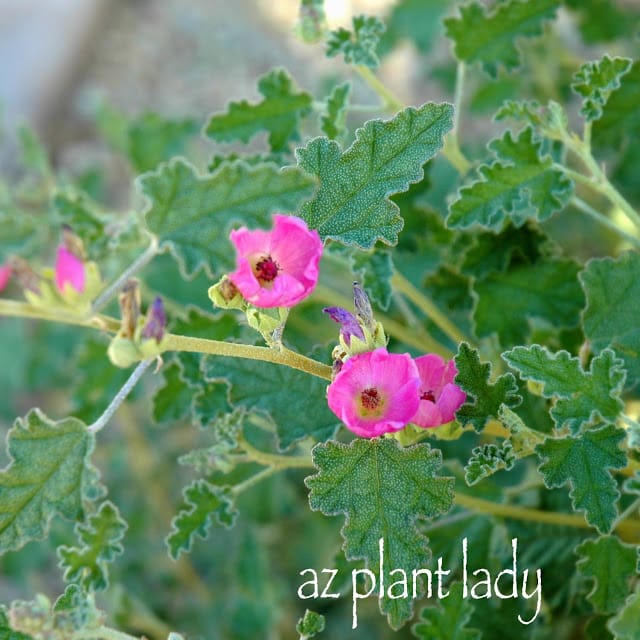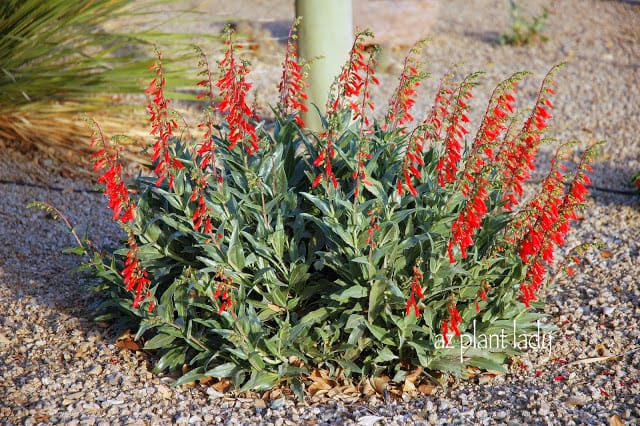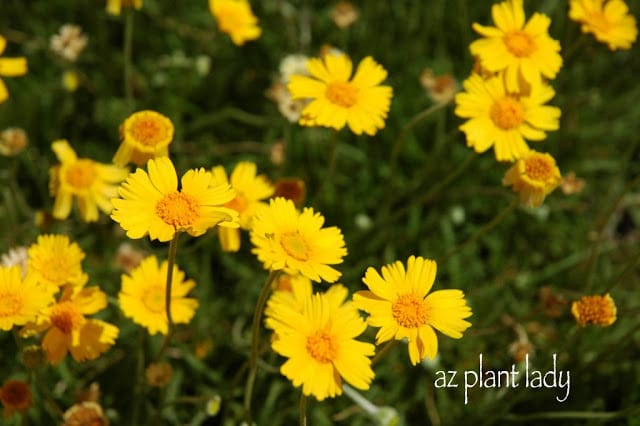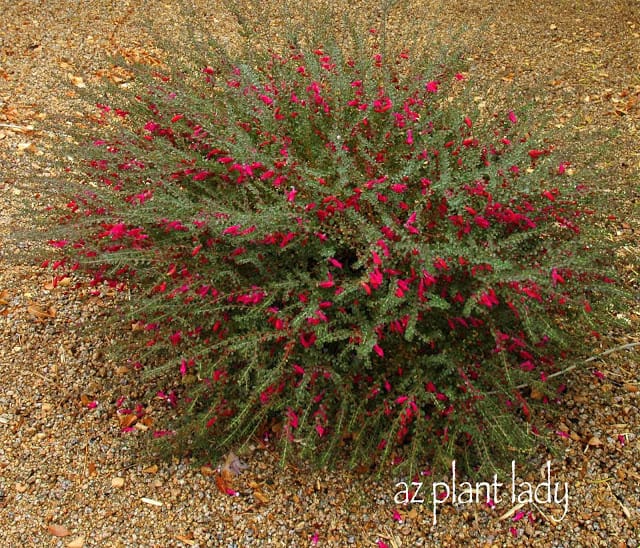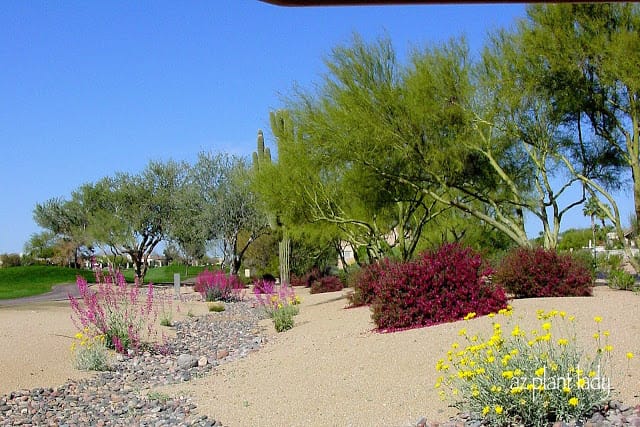
The Beauty of Year-Round Gardening in the Desert
One of the many blessings of living in the desert is that you can garden all year. That means that you can have beautiful color all year, even in the desert winter (above).
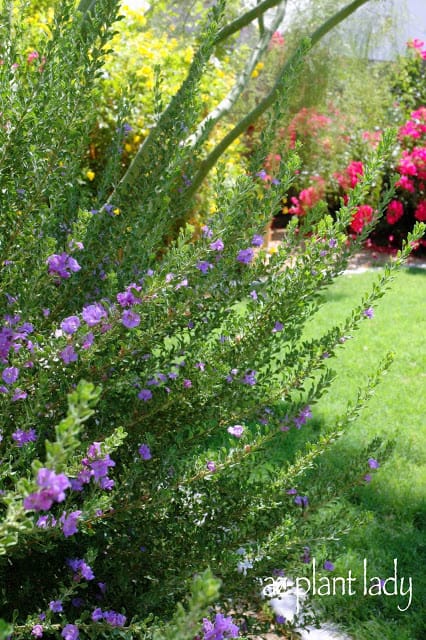
Embracing Winter Color in Desert Landscaping
Drive down the street during the summer, and you will see flowering plants in the common areas and gracing the front yards of everywhere you look. Texas Sage, Bougainvillea, Lantana, and Tecoma species dot the landscape as shown in the photo above.
Why, then, do people not include plants that will provide color in the winter? You can take the same drive as you did in the summer and see nothing but green blobs and nothing else (below). The landscape below is an unfortunate victim of ‘poodle’ pruning. We are so fortunate to live in an area with relatively mild winters, so why not take advantage of that fact in your garden?
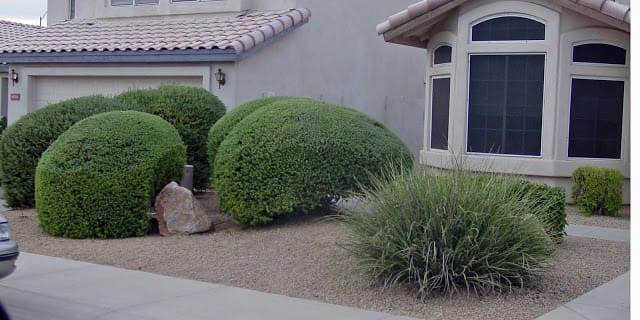
I mean, who thinks that this looks nice? Countless times, when I am meeting with clients, they ask, “My landscape is so boring. What can I do to make it look better?” The majority of the time, I hear this from winter residents. Their landscape is a riot of color in the summer when they are gone. But, in the winter when they are there, they have green blobs and little else.
Adding Winter Color to Your Landscape
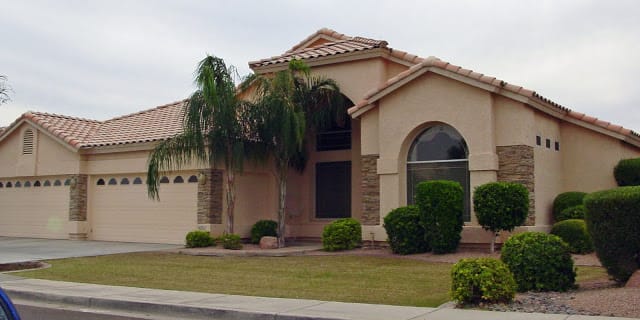
The landscape (above) has potential. The solution to a somewhat dull landscape is easy. Add plants that bloom in the cool-season to the landscape.
When I create a landscape design for a brand new landscape, I make sure to include a variety of plants that flower at a different time of the year. This ensures year-round color. If you have an established landscape, add a few winter-flowering plants. That is all it takes.
Top List of Plants for Stunning Winter Color
For beautiful winter color, I recommend trying the following:
Damianita (Chrysactinia mexicana) – Late Winter and Fall Blooms
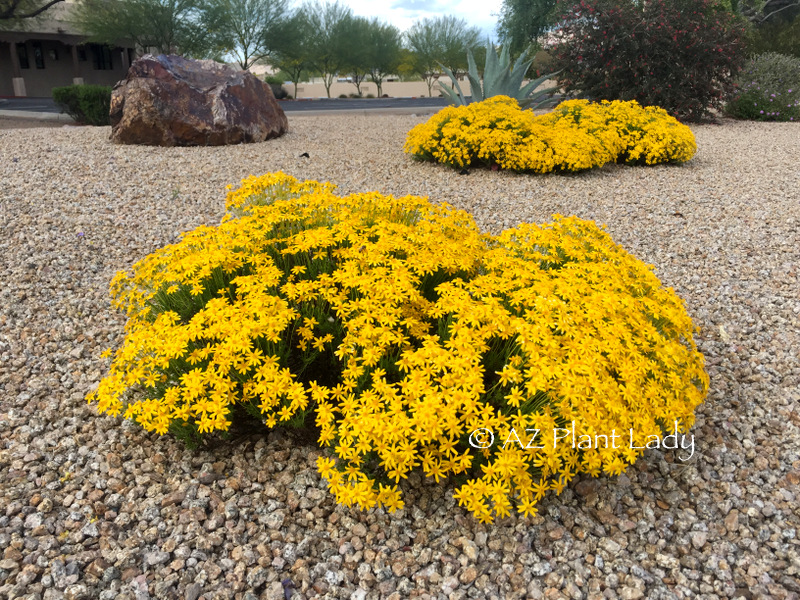
Damianita (Chrysactinia mexicana) Flowers late winter to spring and again in fall
Valentine Bush (Eremophila maculata ‘Valentine’) – Winter to Mid-Spring Blooms
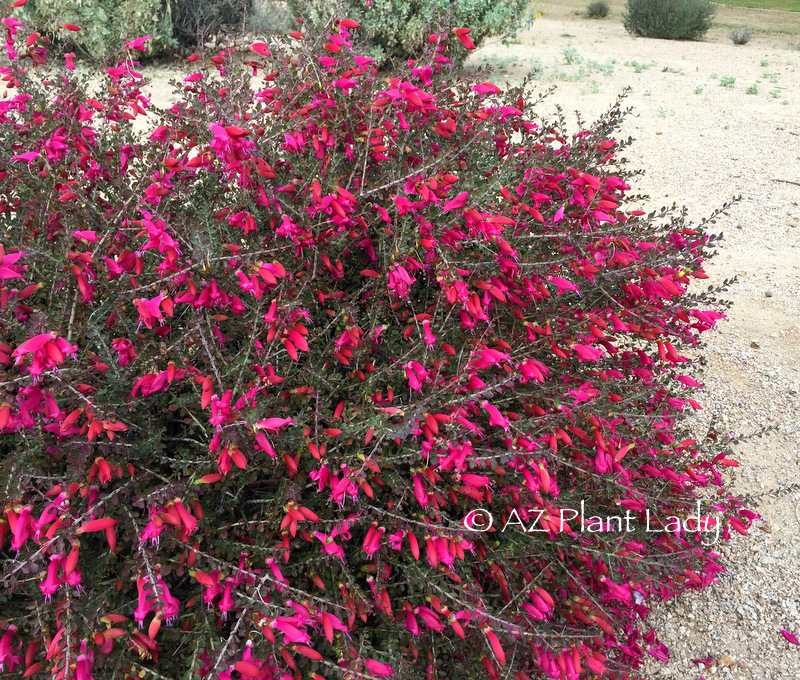
Valentine Bush (Eremophila maculata ‘Valentine’) Flowers winter into mid-spring
Purple Lilac Vine (Hardenbergia violaceae) – Mid-Winter Blooms
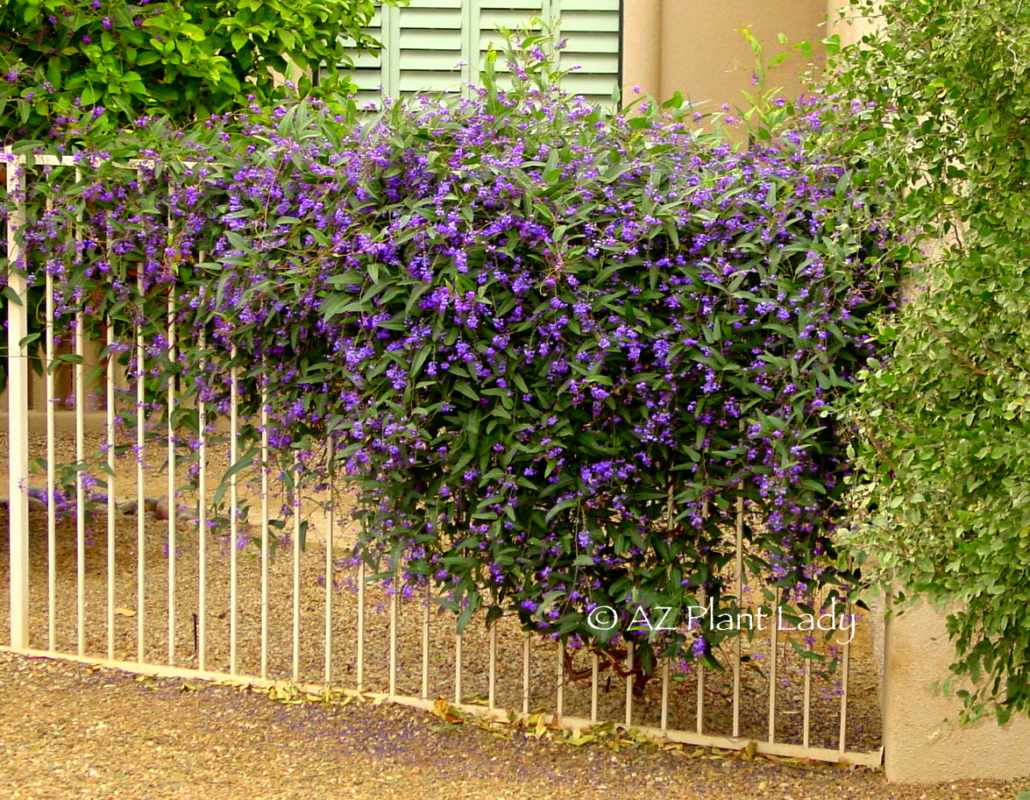
Purple Lilac Vine (Hardenbergia violaceae) Flowers in mid-winter
Blackfoot Daisy (Melampodium leucanthum) – Winter, Spring, and Fall Blooms
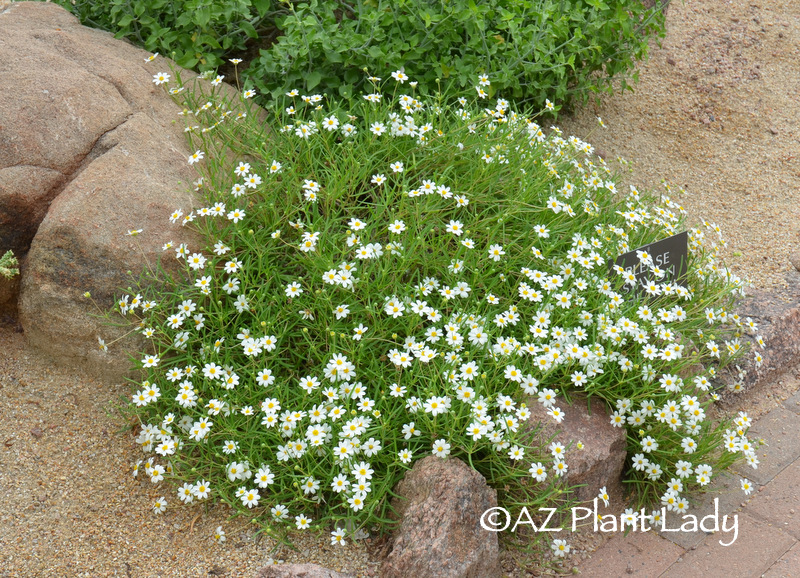
Blackfoot Daisy (Melampodium leucanthum) Blooms winter, spring, and fall
Firecracker Penstemon (Penstemon eatoni) – Winter to Spring Flowers
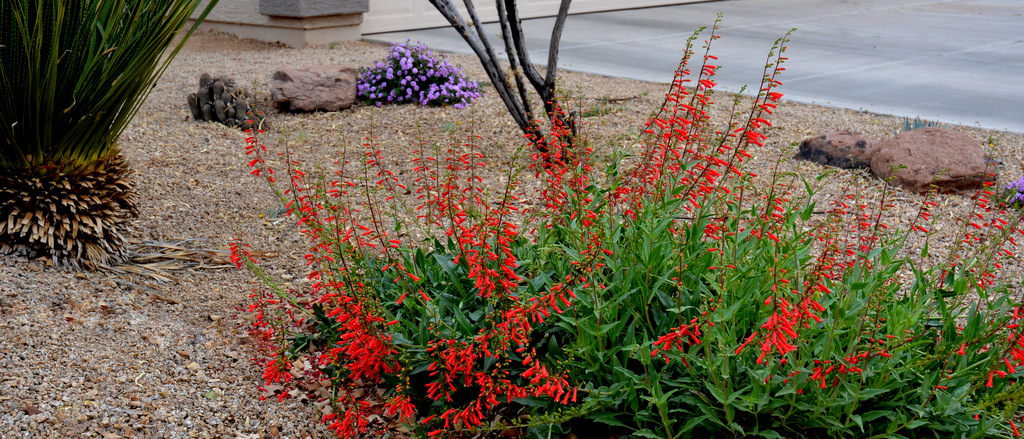
Firecracker Penstemon (Penstemon eatoni) Flowers winter into spring
Globe Mallow (Sphaeralcea ambigua) – Mid-Winter to Spring Blooms
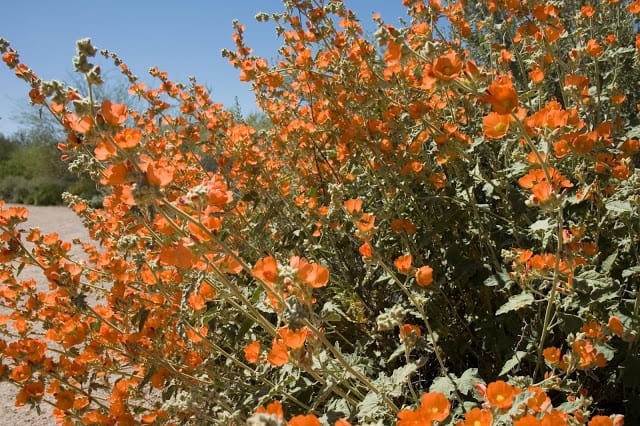
Globe Mallow (Sphaeralcea ambigua) Flower mid-winter into spring
Feathery Cassia (Senna artemisoides) – Mid-Winter to Spring Blooms
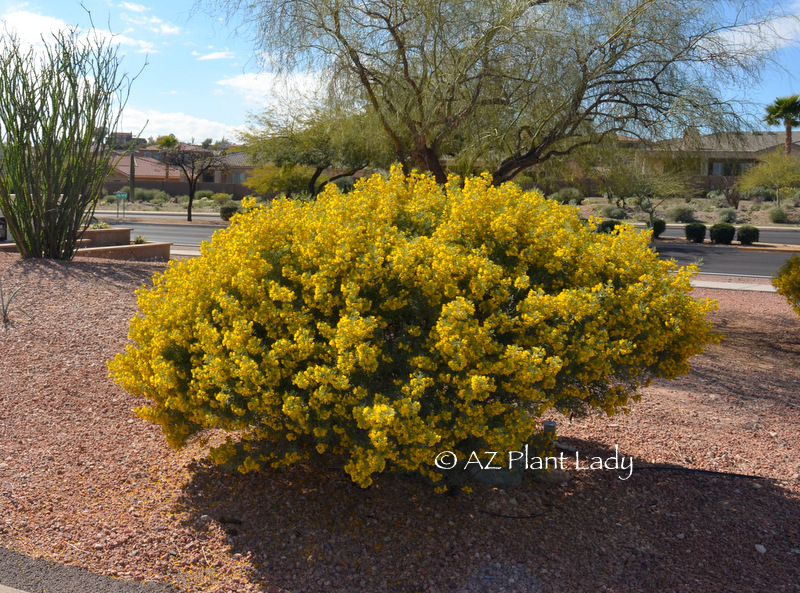
Feathery Cassia (Senna artemisoides) Blooms mid-winter into spring
Angelita Daisy (Tetraneuris acaulis) – Year-Round Blooms
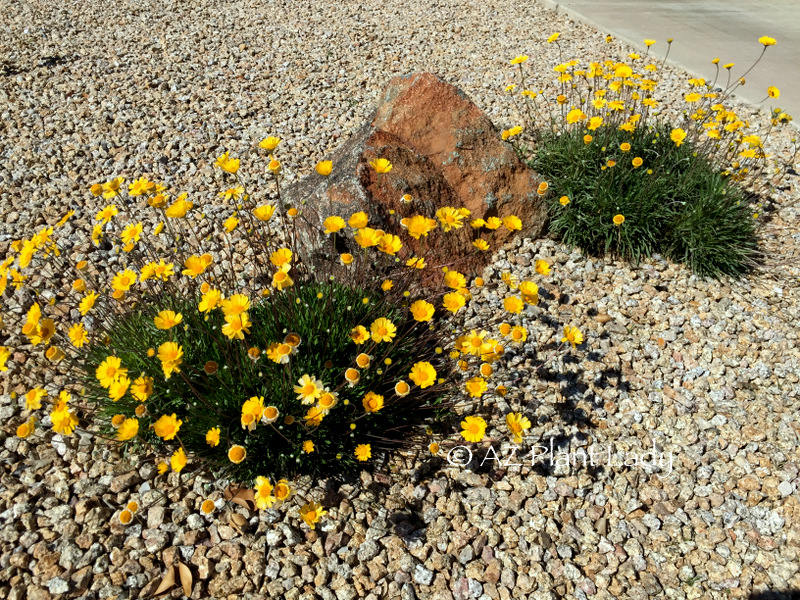
Angelita Daisy (Tetraneuris acaulis) syn. Hymenoxys acaulis Blooms off and on throughout the year
Add Winter Color to Any Climate
As you can tell, there are countless plants that you can use for winter color. If you are only a winter-resident, you may choose to primarily have plants that flower in winter. As for me, I love lots of color year-round. My favorites are Purple Lilac Vine, Firecracker Penstemon, Valentine, and Angelita Daisy.
Whether you live in the Tropics or Canada, this same principle is true for any climate you live in – make sure your garden provides color for you when you are there.
What are your favorite winter-bloomers?


